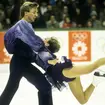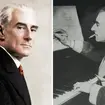Maurice Ravel: A Life
Regarded alongside Debussy as the leading French composer of his time, Maurice Ravel was a master of his craft, weaving a child-like wonder and nostalgia for the past into music of exquisite charm and poise.
Who was he? Creator of magical new soundscapes.
Why is he important? Put French neo-classicism on the map, and super-refined orchestral techniques.
What are his most famous works? Ma Mère L’oye; Daphnis Et Chloé; Pavane Pour Une Infante Défunte; Le Tombeau De Couperin; Boléro; Piano Concerto in G.
Ravel’s music was a natural extension of his inner being. Few, if any, composers can be said to exhibit such intimate correspondences between their day-to-day lives and their music.
His fastidiousness over every aspect of his scores was reflected in his obsession with appearing immaculately groomed and dressed at all times. He was a particularly keen follower of the latest fashions in ties and gloves, and one of his most prized possessions was a pair of black patent leather shoes.
Ravel was especially proud of his Basque heredity on his mother’s side, which resulted in a series of priceless Hispanic gems, including Alborada Del Gracioso (from Miroirs), Rapsodie Espagnole and the gently smouldering Pièce En Forme De Habañera.
His love of all things mechanical is reflected in the clockwork precision and intricate logic of his writing. He possessed a magical, child-like sense of wonder and innocence – what one of his closest friends described as his “enjoyment in everything” – which found an outlet in such ecstatically inspired scores as the ballet Ma Mère L’oye (Mother Goose) and the opera L’enfant Et Les Sortilèges (The Child And The Spells).
Ravel’s nostalgia for the past extended to his neo-classical delight in rethinking popular idioms of the 17th century, particularly the minuet. This popular triple-time dance not only provided him with one of his earliest successes – the Menuet Antique – but also inspired such exquisite miniatures as the Menuet Sur Le Nom De Haydn, the central movement of his delightful Sonatine and the fifth movement of the original piano version of Le Tombeau De Couperin, which also features a prelude, fugue and toccata, alongside such comparative rarities as a forlane and rigaudon.
Yet despite Ravel’s love for the past he also enjoyed being bang up-to-date with the latest trends. The contemporary obsession with all things oriental is infectiously captured in the pentatonic hustle and bustle of Pagodes (from Ma Mère L’oye) and the languorous sensuality of the song-cycle Shéhérazade. Impressionistic washes of colour characterise works as idiomatically contrasting as the ballet Daphnis Et Chloé and the sublime Introduction And Allegro for harp and chamber ensemble.
The influence of American popular styles (jazz, ragtime and the blues) is keenly felt in the Piano Concerto in G, the Sonata For Violin And Cello and the 1927 Violin Sonata. And the mindless futility of the Great War is reflected most poignantly in two scores that end in terrifying oblivion – La Valse and Boléro.
Above all, Ravel was a manipulator of sound without parallel in the history of music. He could seemingly compose for any instrument or combination thereof with exemplary skill, imagination and empathy.
Indeed, he prided himself on solving technical problems – his dazzling Tzigane was composed virtually as an exercise in pushing the violin to its outer limits in a modern idiom rooted in the café gypsy style. No wonder Stravinsky, who enjoyed a kind of mutual admiration society with Ravel, once referred to him as “the most perfect of Swiss clockmakers”.
Ravel was just 14 when he began preparatory classes at the Paris Conservatory. By the time he progressed to senior level in 1891 his creative potential was already widely recognised, although no one at this stage was remotely predicting an international career. Ravel might have been a slow-burner, but by the mid-1890s his talent could no longer be denied.
In 1895 he produced his first published work, the Menuet Antique, and by the turn of the century, following lessons with Gabriel Fauré, he had become a minor celebrity thanks to the indelible, super-cool melody and skin-rippling harmonies of the Pavane Pour Une Infante Défunte (1899).
The following year Ravel entered the Prix de Rome, France’s most prestigious composing award which offered the winner the opportunity to study for several months in the Italian capital.
He failed at the first attempt, but undeterred re-entered the competition each one of the following three years with the same result. Incredibly, at the same time that his public reputation as a composer was steadily growing with such radiantly inspired works as Jeux D’eau (1901), The String Quartet (1902-03) and Shéhérazade (1903), the Conservatoire, under its notoriously conservative director Théodore Dubois turned its nose up at him as a young maverick lacking in basic technique.
The situation came to a head when in 1905, the same year that Ravel completed his Sonatine, Miroirs and the glorious harp-led Introduction And Allegro, he was curtly dismissed from the preliminary round of the Prix de Rome at the fifth attempt. From the ashes of academic defeat rose a public outcry so powerful that the papers dubbed it the “Ravel Affair”. Dubois was forced to resign, Fauré took his place, and Ravel became a national celebrity almost overnight.
Over the following decade Ravel established an unassailable position as France’s most celebrated composer alongside Claude Debussy. Riding on a wave of artistic and critical success, Ravel produced a succession of blazingly inventive scores of extraordinary finesse during what became the most intensely productive period of his career.
His orchestral credentials were put beyond doubt by the glittering allure of the Rapsodie Espagnole (1907), and the hypnotic soundscapes of his two classic ballet scores, Daphnis Et Chloé (1909-12) and Ma Mère L’oye (1911-12). Meanwhile, the world of piano music was turned upside down by Gaspard De La Nuit (1908), Ravel’s intoxicating three-movement suite climaxing in Scarbo, a musical portrait of a menacing goblin that takes keyboard virtuosity to its outer reaches.
Just as Ravel’s star was in the ascendant, Europe was shaken to its foundations by the outbreak of the First World War. Having completed his glorious Piano Trio (1914) and now desperate to join his fellow Frenchmen in the field, Ravel left a number of ongoing projects incomplete.
Although he was unable to man the trenches due to his small stature (he was 5 feet 4 inches) he drove military vehicles for a while at the Verdun front. He lost countless friends during the war – each of the six movements of Le Tombeau De Couperin (1914-17) is dedicated to one of them. The passing of his beloved mother and the death of Debussy compounded his profound sense of loss.
Decimated and inconsolable, in 1921 Ravel cocooned himself in the emotional safety blanket of Le Belvédère, his new home in the village of Montfort l’Amaury, surrounding himself with all manner of objets d’art and mechanical toys designed primarily to recreate the sights and sounds of childhood.
His composition rate slowed to a trickle and his music lost its inner glow. However masterfully written and exuberantly inventive there is no doubting the distinct chilliness of the Sonata For Violin And Cello (1922), Tzigane (1924), the Violin Sonata (1927) and Boléro (1928).
Following a successful American tour in 1928, during which Ravel refused to give lessons to George Gershwin on the basis that he didn’t want him churning out “second-rate Ravel” when he could be writing “first-rate Gershwin”, the great Frenchman entered a new phase of consummate mastery with his two piano concertos – utterly contrasting works that show some of the old warmth and charm returning to his music.
Sadly, the remainder of his life was plagued by the onset of Pick’s disease, which progressively reduced his ability to control his speech and movement. An unsuccessful attempt to bring him some relief with cranial surgery in 1937 resulted in his death at the age of 62.
Ravel was buried not in the glamorous Père-Lachaise Cemetery in Paris, but in the Cimetière de Levallois-Perret in the north of the city alongside his parents, according to his wishes. The great man’s gravestone is an unassuming black marble affair, inscribed modestly “Compositeur Français”.



















